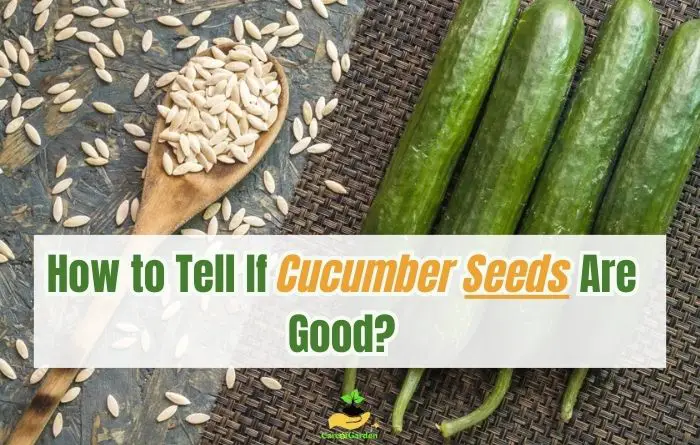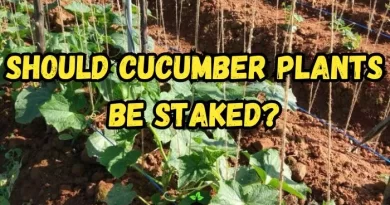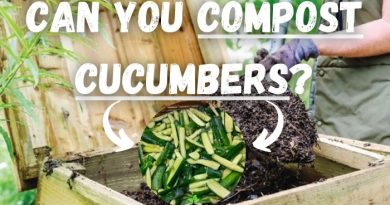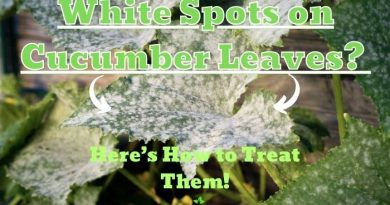How to Tell If Cucumber Seeds Are Good? 5 Easiest Tests!
When it comes to growing cucumbers, choosing good quality seeds is essential for a successful harvest. But how can you tell if the cucumber seeds you have are good? In this article, I will share some tips on how to select and test cucumber seeds to ensure that you have the best possible chance of a successful harvest.
To tell if cucumber seeds are good, gardeners can use several simple tests. Visually inspect seeds for cracks, holes or discoloration which indicate poor viability. Squeeze seeds gently – firm ones that don’t crush are viable. Place seeds in water – those that sink are likely to sprout. Also, check for foul odors signaling spoiled seeds.
For the highest accuracy, use the float, squeeze, and smell tests plus visual inspection together. Then perform a germination test by planting seeds in the soil. Count sprouts in 7-14 days to determine the percentage that germinate – over 70% is good. Seeds that pass these tests are healthy and ready for planting your cucumber crop.
How to Tell If Cucumber Seeds Are Good
As someone who enjoys growing cucumbers, it’s important to know how to determine if the cucumber seeds you have are good quality. Here are a few methods you can use to test the quality of your cucumber seeds.
1. Visual Inspection
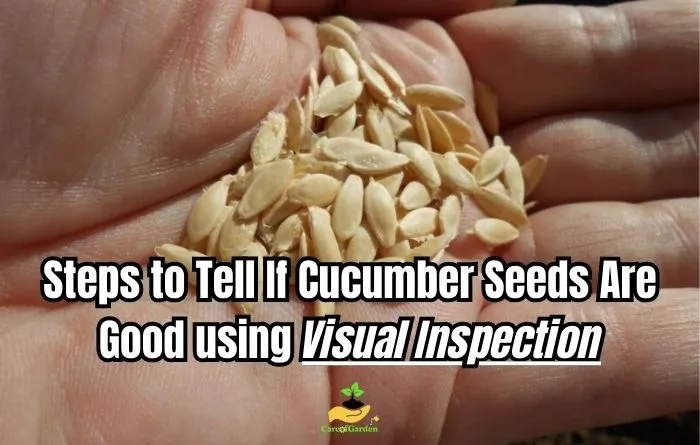
The first step in determining the quality of your cucumber seeds is to visually inspect them. Good quality cucumber seeds should be plump, firm, and uniform in size and color. Any seeds that are discolored, misshapen, or have cracks on their surface should be discarded.
Materials Needed:
- Cucumber seeds
- Magnifying glass (optional)
- Bright light
Steps to Tell If Cucumber Seeds Are Good using Visual Inspection:
- Select a sample of 10-20 seeds for inspection.
- Examine seeds against a white background in bright light.
- Check the seed coat – it should be intact, smooth, and free of cracks or holes.
- Observe the color, which should be a uniform greenish hue.
- Inspect the shape and size, which tend to be consistent.
- Look for signs of mold, damage, shriveling, or discoloration.
- Use a magnifying glass to closely examine suspect seeds.
- Discard any seeds that are misshapen, cracked, moldy, or discolored.
- Consider retesting questionable seeds after float/squeeze tests.
- Save seeds that appear healthy, plump and uniform for other viability tests.
With a little focus and bright light, visual inspection allows you to screen for physical defects that may impact a cucumber seed’s ability to sprout.
2. Seed Germination Test
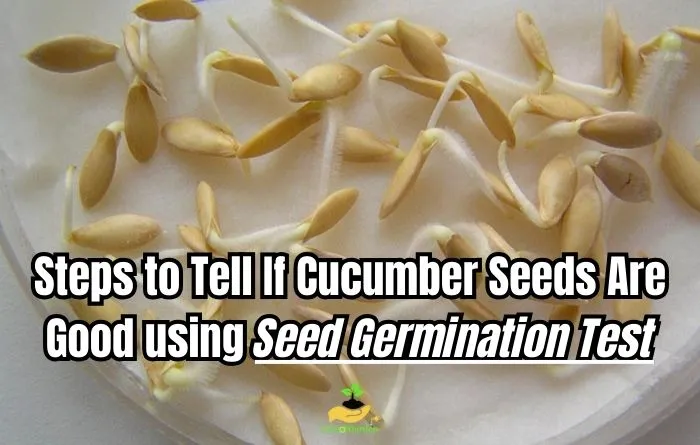
Another method to test the viability of your cucumber seeds is to conduct a seed germination test. This method allows testing seeds in a clear plastic bag so the germination process can be observed.
| Week 1 | Week 2 |
|---|---|
| Check for tiny white roots emerging | Check for seed leaves following sprouted stems |
Materials Needed:
- Cucumber seeds
- Damp paper towel
- Plastic bag
- Marker/labels
Steps to Determine If Cucumber Seeds Are Good Using Seed Germination Test:
- Fold a paper towel and moisten with water.
- Gently lay 10-20 cucumber seeds on the towel, spacing them out.
- Seal the towel and seeds inside a plastic bag.
- Label the bag with the date and “germination test”.
- Place the bag in a warm spot with indirect sunlight.
- Check daily for sprouts emerging through the towel and bag.
- Keep the towel moist by misting inside the bag if needed.
- Watch for sprouts – viable seeds will emerge in 7-14 days.
- Count sprouted seeds after 7-14 days and calculate the percentage.
- Discard seeds with a low germination rate.
- Consider retesting non-viable seeds for accuracy.
- Transplant sprouts or save for future reference.
It’s one of my favorite ways to test seeds because the self-contained bag makes for a simple test that reliably identifies the most robust seeds.
When I use this method, I can be confident that the seeds emerging in the bag are the most viable options for a successful crop. The clear bag germination test helps me select only the strongest seeds that will thrive in my garden.
3. Float Test

The float test is another way to check the viability of your cucumber seeds. This technique takes advantage of the fact that viable seeds will sink in water, while non-viable seeds will float.
Materials Needed:
- Cucumber seeds
- Container with room temperature water
- Magnifying glass (optional)
Steps to Determine If Cucumber Seeds Are Good Using Float Test:
- Select 10-20 seeds for testing and place them in the water.
- Give the seeds 5-10 minutes to soak, allowing air pockets to escape.
- Check which seeds have sunk to the bottom. According to seed-saving experts, seeds that sink are the most viable.
- Use a magnifying glass to examine any seeds that did float. Look for signs of damage, cracks, or mold. Floating seeds are less likely to sprout.
- Discard any floating seeds identified as having issues. The sunk seeds are good candidates for germination testing or direct planting.
- For accuracy, perform the float test on seeds that both passed and failed other tests like visual inspection or germination.
- The float test provides a quick assessment but isn’t definitive. Always combine with other testing methods for reliability.
4. Squeeze Test
Another simple technique for assessing cucumber seed viability is the squeeze test. This method takes advantage of the texture difference between viable and non-viable seeds.
Materials Needed:
- Cucumber seeds
- Fingertips
- Magnifying glass (optional)
Steps to Tell If Cucumber Seeds Are Good using Squeeze Test:
- Select several seeds and gently roll them between your fingertips.
- Viable seeds will feel firm and crunchy. You may be able to feel the embryo inside.
- Non-viable seeds will feel softer, mushier or hollow when squeezed.
- Examine any soft seeds under a magnifying glass for signs of damage or mold.
- Discard any seeds that squish or feel hollow as they likely won’t sprout.
- For accuracy, squeeze test seeds both before and after other testing methods.
- Be very gentle – apply only light pressure to avoid damaging potentially viable seeds.
- Consider combining with visual inspection and float/germination tests for reliability.
Together with my other testing methods like the float test and visual inspection, the squeeze test helps me pick out the hardiest seeds in my collection that have the highest chances of growing into productive plants.
By identifying the freshest, most robust seeds using these combined tests, I can select the best stock for planting my cucumber crop each season.
5. Smell Test
Finally, the smell test is another way to check the quality of your cucumber seeds. Good quality cucumber seeds should have a mild, nutty smell. If your seeds have a strong, rancid odor, then they may be no longer viable.
Steps to Determine If Cucumber Seeds Are Good using Smell Test:
- Select a small sample of 10-20 seeds for testing.
- Hold each seed up to your nose, one at a time.
- Viable seeds will have little to no odor. You may detect a faint earthy or nutty scent.
- Seeds that are spoiled or moldy will have a noticeable sour, musty or unpleasant smell.
- Smell can also indicate age – older seeds may have a stronger scent.
- Examine any seeds with odor closely for visible signs of issues.
- Discard seeds with a pronounced bad smell, as they likely won’t sprout.
- For accuracy, smell test seeds both before and after other tests like germination.
- Consider combining with visual, float, squeeze tests for reliability.
Using your sense of smell can provide another quick check of cucumber seed quality. Along with other tests, it helps identify the freshest, healthiest seeds.
How to Choose the Right Cucumber Seeds
From my experience as a gardener, I know that choosing high-quality cucumber seeds is the first important step when starting my crop. I always obtain my seeds from reputable suppliers and look for packages labeled “certified organic” or “non-GMO” to be certain I’m getting seeds free from chemicals and GMOs.
It’s also crucial that I select seeds that are fresh. I make sure to check that the seeds I purchase have been properly stored. Old or improperly stored seeds in my garden are less likely to sprout and produce healthy, productive plants.
Here are some of the factors I consider important when selecting which cucumber seeds to grow:
Factors to Consider When Choosing Cucumber Seeds
- Type of Cucumber: There are many types of cucumbers available, including slicing, pickling, and burpless. Consider the intended use of the cucumber when selecting the seed variety.
- Hybrid vs. Heirloom: Hybrid plants are a cross between two different plants, while heirloom plants are open-pollinated and have been passed down for generations. Hybrid plants often have desirable characteristics, such as disease resistance, but heirloom plants have unique flavors and are often more suitable for seed saving.
- Seed Viability: Good quality cucumber seeds should have a high germination rate. Check the seed packet for the germination rate and choose seeds with a rate of at least 80%.
- Seed Storage: Fresh seeds have a higher germination rate than older seeds. Store cucumber seeds in a cool, dry place to maintain their viability.
- Cross-Pollination: Cucumbers can cross-pollinate with other gourds, such as melons and squash. To maintain seed purity, isolate cucumber plants from other gourd plants or hand-pollinate the flowers.
Tips for Selecting the Best Cucumber Seeds for Your Needs
- Direct Sowing: Cucumber seeds can be sown directly into the soil after the danger of frost has passed. Plant more seeds than needed to ensure a successful harvest.
- Time of Planting: Cucumbers prefer warm weather and should be planted after the soil has warmed up. In most areas, this is in late spring or early summer.
- Fertilizer and Compost: Cucumbers require well-draining soil and benefit from regular fertilization and composting.
- Gel Coating: Cucumber seeds are coated in a gel that can inhibit germination. To remove the gel coating, soak the seeds in water for 24-48 hours before planting.
By considering all these factors and tips I’ve shared, you can select the best cucumber seeds for your needs and ensure a successful harvest. Remember to test the seed viability before planting and store the seeds properly to maintain their quality.
How to Store Cucumber Seeds
As a gardener, I know how important it is to store cucumber seeds properly to ensure they remain viable for future use. Here are some tips on how to store cucumber seeds to maintain their quality and germination rate.
Best Practices for Storing Cucumber Seeds
The best way to store cucumber seeds is to keep them in a cool, dry, and dark place. The ideal temperature for storing cucumber seeds is around 50°F to 60°F (10°C to 15.5°C). You can store cucumber seeds in a jar or an envelope, but make sure to label them with the date of harvest and the variety of cucumber.
It’s also important to make sure the seeds are completely dry before storing them. You can dry cucumber seeds by spreading them out on a screen or paper towel and leaving them in a cool, dry place for a few days. Once they are dry, store them in an airtight container to prevent moisture from getting in.
Tips for Maintaining the Quality of Cucumber Seeds
To maintain the quality of cucumber seeds, it’s important to store them properly and protect them from pests and disease. Here are some tips to help you keep your cucumber seeds in good condition:
- Check the seeds for signs of disease or damage before storing them. Discard any seeds that are discolored, moldy, or have holes in them.
- Store the seeds away from direct sunlight and heat. Exposure to sunlight and high temperatures can reduce the viability of the seeds.
- Keep the seeds away from moisture. Moisture can cause the seeds to mold or rot.
- Use pruners to harvest the cucumbers, rather than pulling them off the vine. This will help prevent damage to the seeds inside.
- Water the cucumber plants regularly to ensure good seed production. Cucumber seeds need a consistent supply of water to develop properly.
- Test the viability of the seeds before planting them. You can do this by placing a few seeds in a damp paper towel and checking to see if they sprout after a few days.
How to tell if your cucumber is ready for picking?
I’ve learned a few tricks for telling when my cucumbers are ready to pick. One thing I check is size – most varieties I grow are mature around 6-8 inches long.
I also pay attention to color. My cucumbers are ripe for eating when they’ve turned a deep, glossy green. Any yellowing or soft spots mean the quality is declining.
Texture plays a role too. I gently feel the cucumber skin – ripe ones will be firm yet slightly soft near the blossom end. If it’s hard all over, it likely needs more time on the vine.
Perhaps the most reliable test is taste! I’ll sample a small piece of any that look promising. A crisp, fresh flavor indicates it’s perfect for adding to my salads or meals.
How to save cucumber seeds for next year?
When my cucumbers start to turn yellow, I allow some to fully mature on the vine. Once dried and brown, I cut them open and scoop out the seeds.
I then ferment the seeds and pulp for a few days to break down the gel coating. This makes them easier to rinse clean. I strain and dry the seeds on a paper towel.
Once fully dried, I store my cucumber seeds in an airtight container like a glass jar. For long-term storage, I keep the container in my refrigerator or other cool, dry place over winter.
Properly saving seeds maximizes their viability for the next season. I usually save a few extra packets too, since cucumber seeds can remain potent for 3-5 years when stored correctly.
What should I do if my cucumber seeds don’t germinate?
If your cucumber seeds don’t germinate, it could be due to a variety of factors, such as poor soil conditions or incorrect planting depth. Try planting more seeds, or consider purchasing new seeds from a reputable supplier.
Frequently Asked Questions
To test cucumber seed viability, you can perform a simple germination test. Take a few cucumber seeds and place them on a damp paper towel. Fold the paper towel over the seeds and place it in a plastic bag. Keep the bag in a warm, dark place for a few days, checking periodically to ensure the paper towel remains damp. After a few days, check to see if the seeds have sprouted. If most of the seeds have sprouted, then the cucumber seeds are likely good quality.
When choosing cucumber seeds, look for seeds that are plump, firm, and uniform in size. Avoid seeds that are discolored, cracked, or shriveled. Also, consider purchasing hybrid seeds, which are bred for disease resistance and higher yields.
To ensure good quality cucumber seeds, store them in a cool, dry place, such as a refrigerator. Keep the seeds in an airtight container, such as a glass jar or plastic bag, and label the container with the seed variety and date of storage.
Cucumber seeds can remain viable for up to 5 years if stored properly. However, the older the seeds, the lower the germination rate. To increase the chances of success, plant more seeds than you need and thin them out later.

